Off the coast of Japan’s verdant Saikai National Park, the Kujukushima Islands lie scattered amid a sprawling network of narrow inlets. Their name literally translates as “99 islands,” though there are over 200 of them, ranging from tiny uninhabited isles to the 650-resident Kuroshima (“Black Island”).
The archipelago’s beauty stretches far out to sea, but it also runs deep: This is rich pearl farming territory.
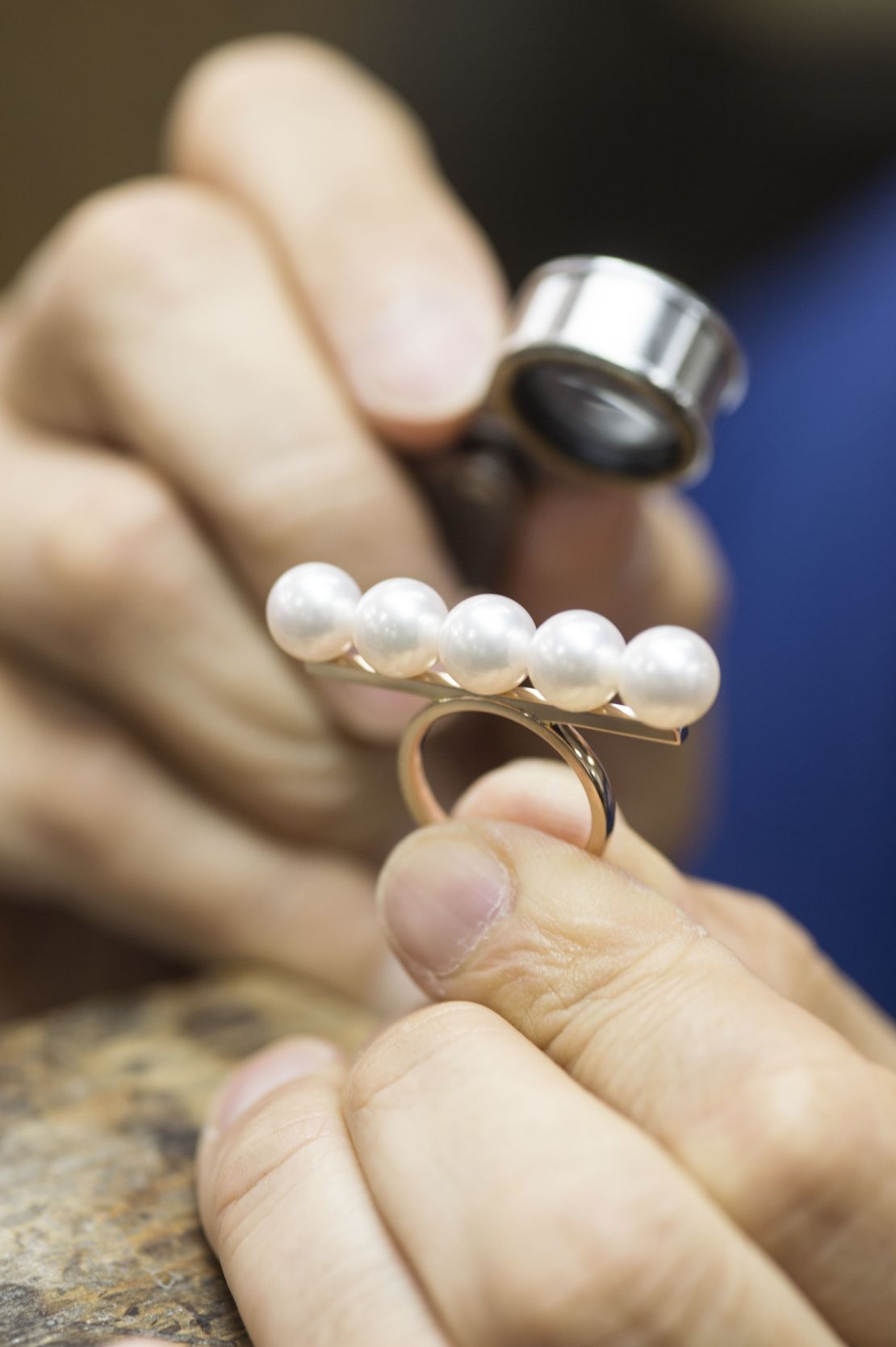
Japanese jewelry house Tasaki has operated a pearl farm here for over 70 years. It cultivates around one million Akoya oysters a year, in tens of thousands of nets resting just below the water’s surface.
With an average diameter of 7 to 8 millimeters, Akoya pearls are often smaller than pearls found elsewhere. But in Japan, they are coveted for their perfectly round shape and brilliant, shiny appearance.
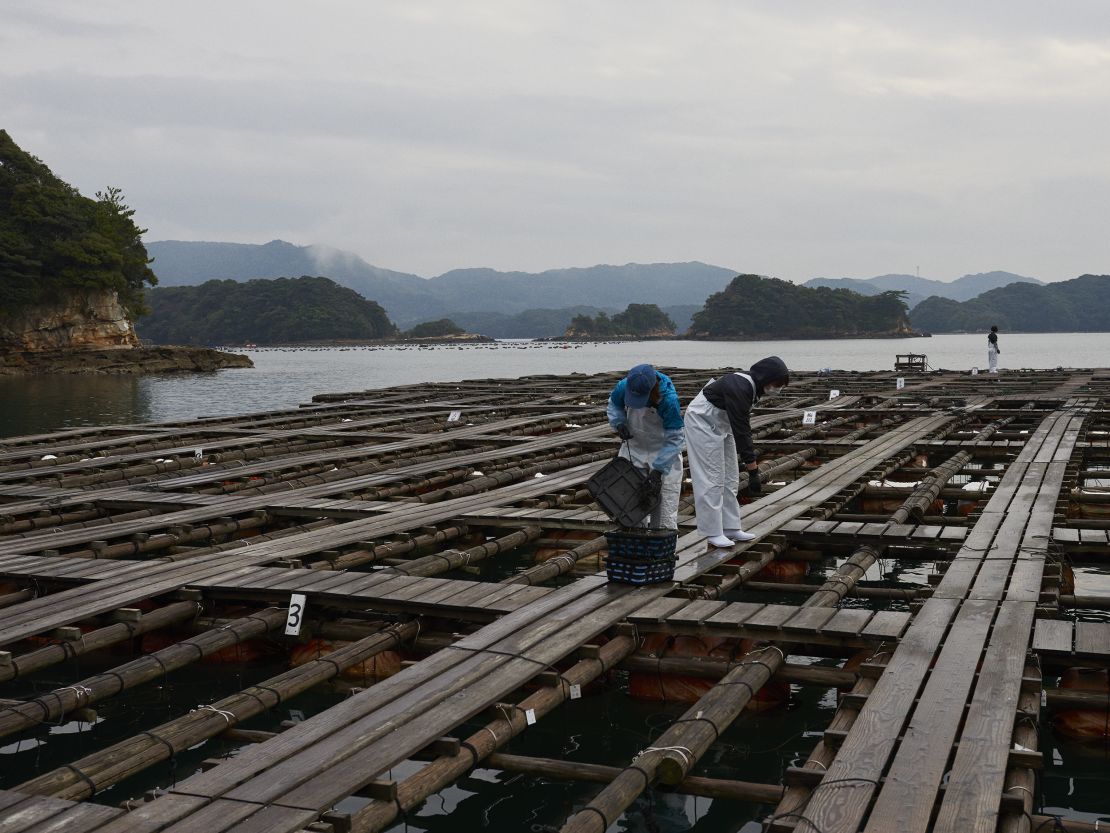
One of Tasaki’s bestsellers is a signature ring featuring a row of five seemingly identical Akoya pearls. The jeweler’s ability to produce pearls of uniform size, shape, color and luster is helped by owning its own farms and closely controlling the production process.
Farming begins in February, with the artificial “seeding” of the oysters. They are incubated for around three months, after which they are ready to live in the sea.
Cultivating the right conditions is the biggest challenge facing Tasaki’s pearl farmers. Oysters thrive in temperatures between 10 and 30 degrees Celsius (50 to 86 degrees Fahrenheit), and keeping the mollusks clean is crucial, according to 65-year-old Masato Yamashita, the farm’s senior adviser.
“Originally, oysters inhabited the bottom of the ocean, but we raise them away from the seafloor, where the environment can easily make them dirty,” said Yamashita, who has over 40 years’ pearl farming experience. “So it takes a lot of time and effort to keep them constantly clean.”
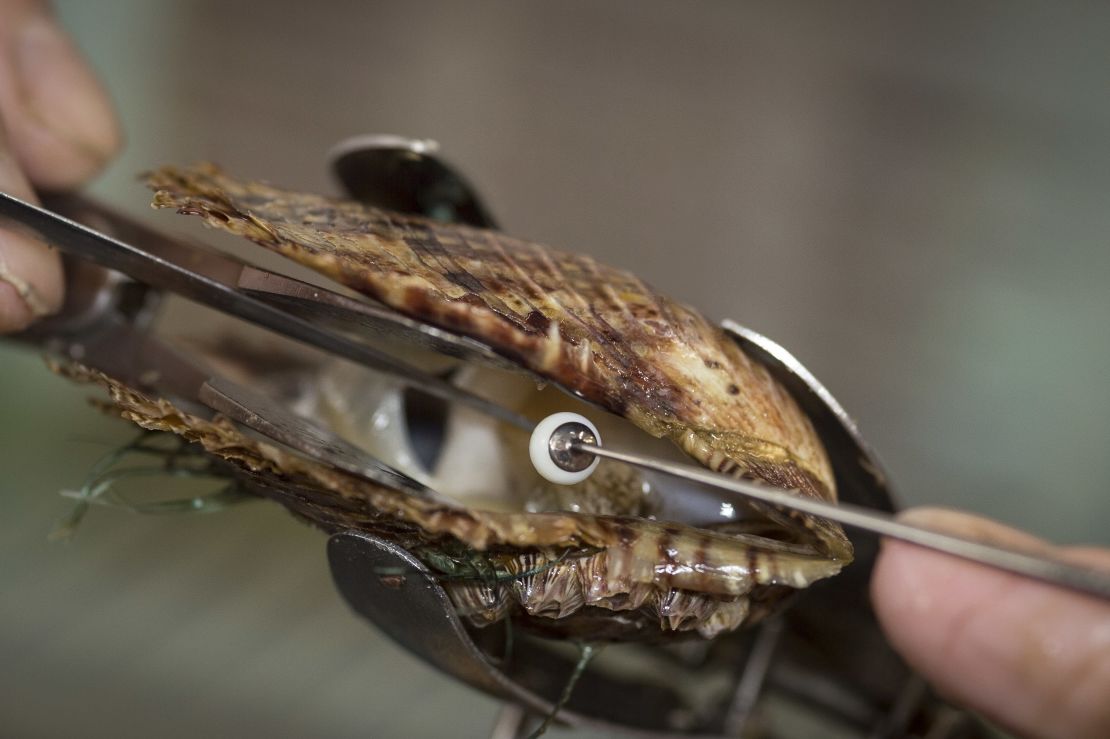
Growing oysters near the coast is preferable, as there are fewer fish or other predators. The sea surrounding the Kujukushima Islands is also rich in plankton, which the oysters feed on.
“Everything has to be very well balanced,” said Yamashita. “If the oysters are grown in a comfortable environment, we say that they ‘smile’ – and good pearls are born. On the other hand, if they are cultivated in a cramped or unhealthy environment, we say the oysters are angry – they bring bad pearls.”
A meticulous process
Pearl farming first emerged in Japan at the turn of the 20th century. Kokichi Mikimoto, the son of a noodle shop owner, invented cultured pearls by mimicking how they form in nature.
Pearls occur naturally when an outside agent – sand or a bone fragment, for instance – becomes lodged inside a mollusk. The creatures secrete nacre (commonly known as mother-of-pearl) which engulfs the object. The layers of nacre eventually form a hard pearl within the mollusk’s shell.
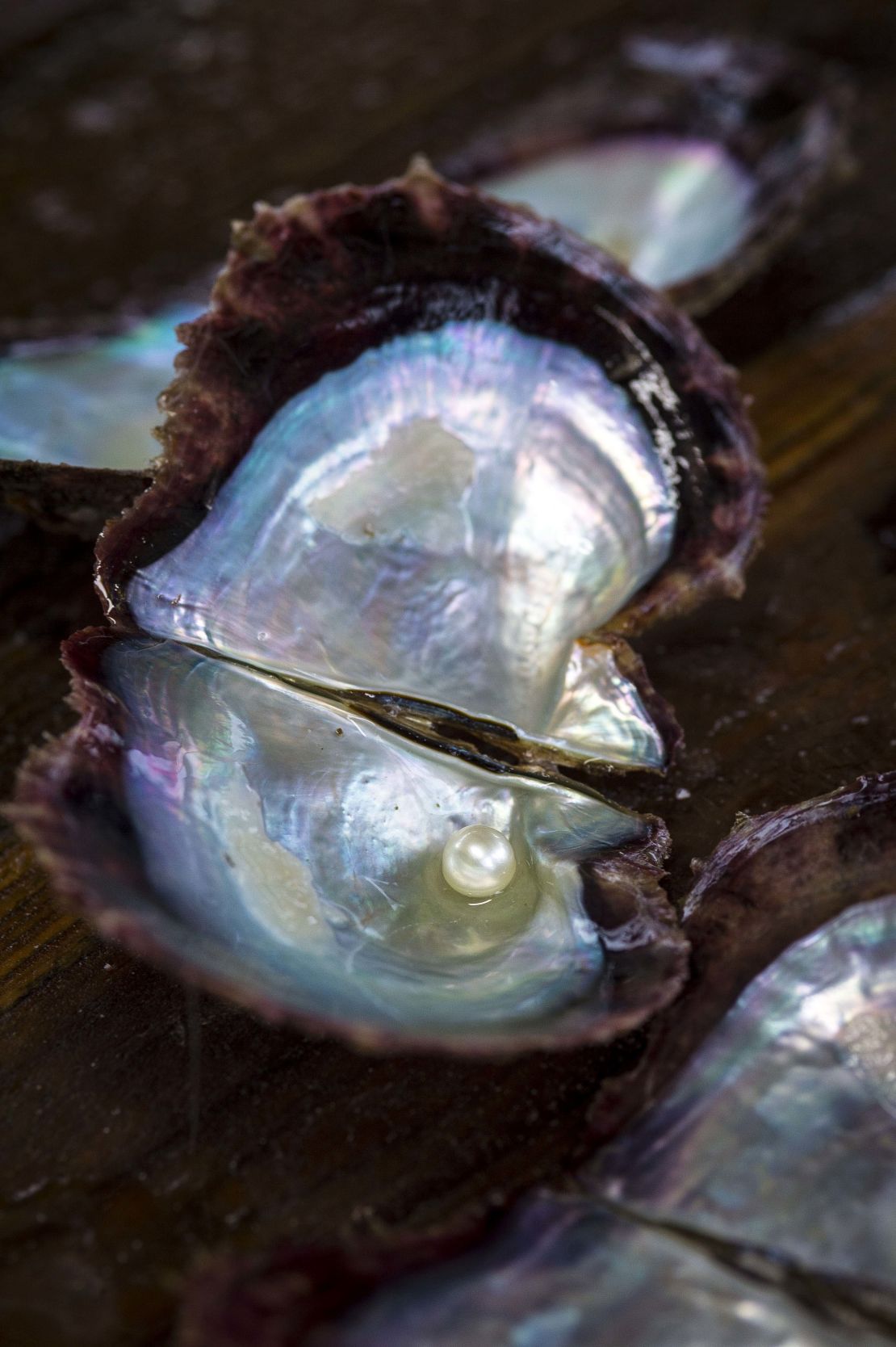
Mikimoto’s idea was simply to artificially insert “nuclei” into growing oysters. Female freedivers (known as “ama”) would dive down to collect the oysters, before returning them to the seabed after the outside agents were inserted.
Mikimoto patented his discovery in 1896 – and although oysters are now farmed closer to the water’s surface, his method remains in use today.
Tasaki grows its oysters for about a year and half before inserting the nuclei. Others in the industry wait up to two years, though Yamashita believes that younger oysters yield better quality pearls.

To prepare the oysters, they are put into a deep “sleep” with the help of a substance called “nigari,” the same coagulate used to make tofu.
“We reduce their stress and food intake, lulling them to sleep in a quiet environment,” explained 47-year-old Masayuki Kondo, a senior manager at Tasaki’s farm. “They are almost in a hibernated state.”
Nuclei insertion requires two objects: The first is the nucleus itself, which in Tasaki’s case, is a heavily polished, perfectly round ball made from Mississippi clam shells. The second is a piece of another Akoya oyster – specifically, the outer epithelium of its mantle lobe – which contains secreting cells. (This is essentially what determines the genetic makeup of the future pearl – its luster and color,” said Kondo.)
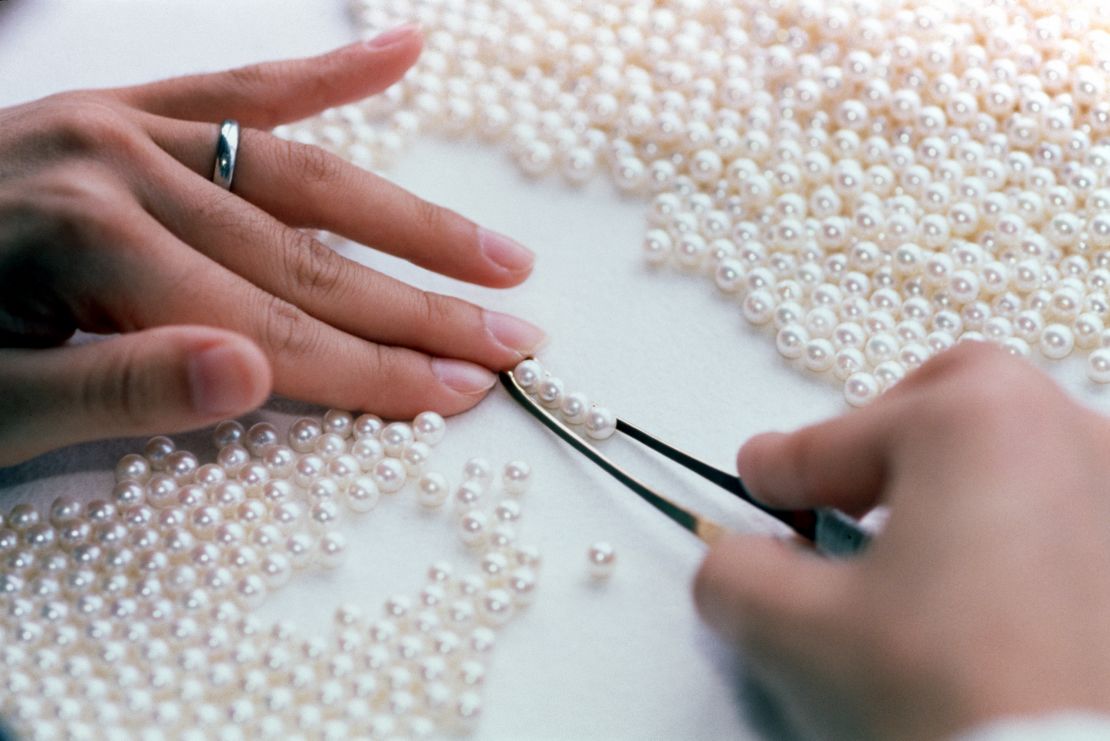
An incision is made in the oyster, and both the mantle epithelium and nuclei are inserted. Following the operation, the oysters are placed in baskets in the sea to recover and to ensure the foreign bodies aren’t rejected.
“Like humans, after an operation you need rest,” said Kondo. “You can’t be up and running the next day.”
Harvesting at the farm takes place in December. It is a full-day affair, with celebrations and thanks or prayers offered for the season’s crop. After all, the oysters are still living creatures and subject to nature’s whims.
“Pearls are living. The sea is also living,” Yamashita said. “If we keep oysters happy in a comfortable environment with hard work – regardless of the weather, even on windy and rainy days – they come out with very beautiful pearls.
“For me, that’s the best part of pearl culture, and the most joyful moment.”









